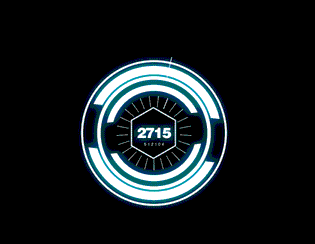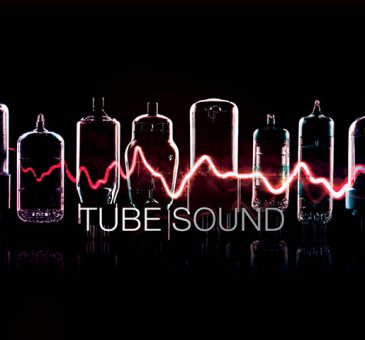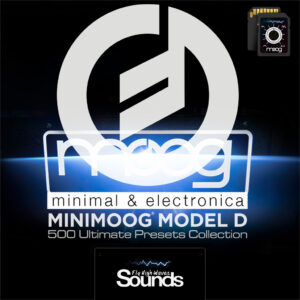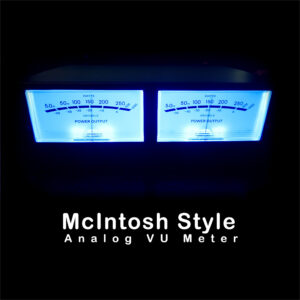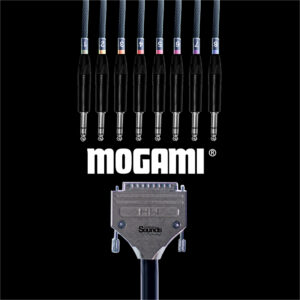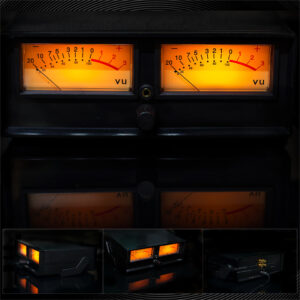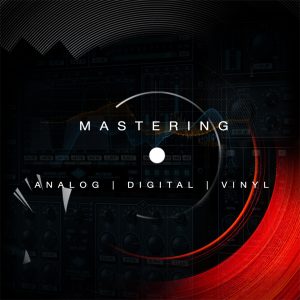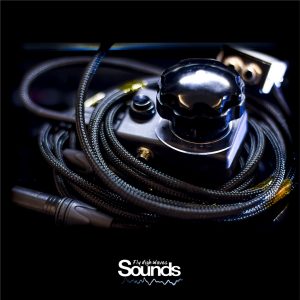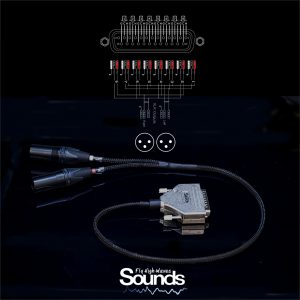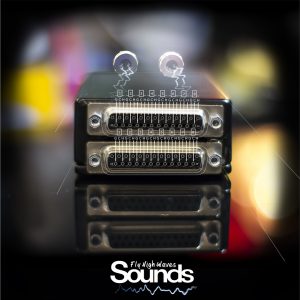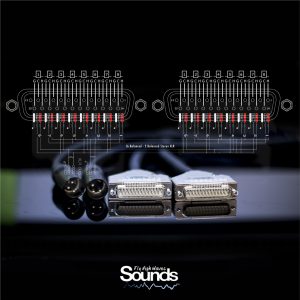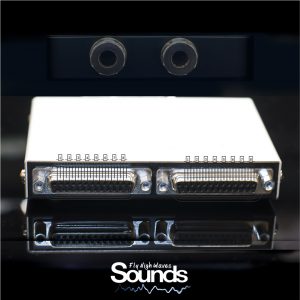What sounds better, tube or solid-state electronics?
I thought it would be fun to contrast and compare the tubes vs. solid-state debate with the analog vs. digital standoff. I’d readily concede that solid-state/transistor components are, watt for watt, cheaper, more reliable, cooler running, smaller and lighter in weight. But if solid-state is so terrific why haven’t tubes become extinct in the half century since transistors came onto the scene? Maybe, just maybe, because tubes sound better?
Analog Warmth
Not everyone has had first‑hand experience of magnetic tape recording and other analogue recording technology, of course, but we’ve all heard and admired the vast back catalogue of classic records made using this technology from the 1950s onwards.
There are many factors that combine to create character in recordings, ranging from instruments, musicians and performances, through the rooms and mics used, to the preamps, processors and effects (and the way in which they’re used), but when we talk about analogue warmth, we’re usually referring to the character that the analogue processing/recording equipment and the recording medium add to the sound.
Digital recording systems can now deliver pretty much all that was once promised: a near‑perfect recording medium that gives back exactly what was recorded. That’s great in some circumstances, but it’s not always what we want: in many cases, the technical limitations and imperfections of analogue systems have become an integral part of the quality of the recorded sounds that we all grew up with — and the end result is perceived by many people as being more pleasing than we can easily achieve today with all‑digital recording chains. (tube overdrive and tape saturation being obvious examples).
Interestingly, sound recording isn’t the only industry that has found this. Digital cameras and imaging software usually provide a range of ‘picture‑style image processing’ options. My own camera offers Standard, Portrait, Landscape, Neutral, Faithful, Monochrome, and three user‑defined modes, for example, each changing the tonal balance, color saturation, sharpness, and contrast in different ways, to enhance the subject.
In short, enjoyment of an artistic product (be it a sound recording, a photograph, a film or whatever) isn’t necessarily about precision and accuracy: more often, it’s about mood, character and subtle enhancements that make the end result more vivid and interesting than real life. When it comes to audio, some aspects of analogue technology introduce artifacts and distortions that are perceived as pleasant, and are often musically enhancing — and this is something that lies at the heart of the idea of ‘analogue warmth’. There are clearly several factors that make up ‘analogue warmth’ and our ears almost certainly require a combination of all of them; focusing on only one doesn’t seem to deliver a truly convincing result in case of emulation plugins.
Transformers
Harmonic distortion in transformers is caused by two effects: hysteresis for low‑level signals and saturation for high‑level signals. The effect is always greatest for low frequencies and results mainly in third‑harmonic distortion. Lots of factors in the design of a transformer affect the level of audio distortion, but key amongst these is probably the material used for the magnetic core. Core metals with a high nickel content typically result in the least hysteresis distortion (but tend to be relatively expensive), while simpler, soft‑steel cores tend to give far higher distortion figures but are much cheaper.
Analogue warmth will inevitably mean slightly different things to different people, but I suppose, broadly speaking, that there are three different approaches you can use to try to get analog flavour into your mix — any of which may be used in combination. The first, most obvious approach, is to try to replicate old techniques: use analogue equipment to make your recordings, and track to multitrack tape — even if you plan to import everything into a DAW later. The second is to do everything after the mic and preamp digitally, using software that emulates the analogue recording chain. The third is to try to ‘treat’ your complete mix with analogue equipment or emulations.
Routing a mix through a high‑quality analog device of some kind, and often one with transformers in it will add a character to the sound
Any non‑linear audio system, such as an analog tape recorder, will distort the input signal to some extent, and because that means changing the shape of the audio waveform, it normally results in the creation of additional harmonics. To simplify, harmonics are multiples of the source (‘fundamental’) frequency that make the sound more complex, which might or might not be pleasing to the ear. Harmonics at two, four, six and eight times (and so on) the source frequency are called even‑order harmonics, while those at 3,5,7,9 (and so forth) are odd‑order harmonics. Some non‑linear systems tend to generate more even‑order than odd, and others more odd than even, with the balance between even‑ and odd‑order harmonics strongly affecting the sound quality.
Tubes sound louder and have a better signal-to-noise ratio because of this extra subjective headroom that transistor amplifiers do not have. Tubes get punch from their naturally brassy overload characteristics. Since the loud signals can be recorded at higher levels, the softer signals are also louder, so they are not lost in tape hiss and they effectively give the tube sound greater clarity. The feeling of more bass response is directly related to the strong second and third harmonic components, which reinforce the “natural” bass with “synthetic” bass [5].
Tube enthusiasts usually contrast the soft sound of tubes with the harsh sound of modern digital recording and mixing, which may have more to do with the use of electrolytic coupling capacitors and inexpensive op-amp ICs than with solid-state devices in themselves.
In the professional audio market, the final frontier for vacuum tubes looks to be in the mixing console. This device is the heart of a working studio, serving as primary signal router, EQ and effects controller, and the tool to mix down multiple recorded channels to a stereo master music program.
Tone
Here is the rub. Within that group of audio enthusiasts and musicians that really care about their sound, there are those that think vacuum tubes simply sound better and those that think solid-state is just as good or better. Solid-state enthusiasts can provide highly technical data that supports their argument, as can those that favor tube-based designs.
Solid-state distortion in its pure form sounds something like bees in a tin foil bag. Not the best for musical instruments and completely unacceptable for home audio enthusiasts. The nature of clipping and distortion also affects the harmonic content of the output signal. The odd-order harmonics produced by solidstate amplifiers produce a edgy or cut-off sound. Often this is viewed as more “accurate” sounding, but the reality is it is also largely the cause of listener fatigue. It is not natural distortion or add to the original signal positively, and good ears with tire of it quickly.
But the main reason both musicians and audiophiles alike love the sound of tubes is their even-order harmonic distortion. The primary difference is even-order versus odd-order harmonic distortion. Perhaps a lesser known type of distortion, harmonic distortion of tubes is what fills out the sound and adds warmth. Without getting too technical, all amplifiers will have sympathetic distortion related to the original signal. Tubes have mostly even-order harmonics (referred to as second, fourth, and sixth). Solid-state devices have more odd-order harmonics (third, fifth and so on). It is the even-order harmonics that will provide positive embellishments to the original signal, making it sound fuller. A technical article written by Russell O. Hamm published in 1973 in the Journal of the Audio Engineering Society described this as a choral or singing sound. This is largely what provides the “tubey” sound, the full, deep, warm sound tube amplifiers are known for.
Dynamic range is another point of contention between the camps. Solid-state does not seem to handle peaks or transients in the music signal as well as tubes. Essentially, I am talking about the sound that goes bang or thump. This is likely due to that fact that tubes naturally have soft clipping and compression to handle transients and smooth those peaks and valleys. The amplification of bass guitar is an exception to this general rule. Low frequencies require more power to amplify than high frequencies. A tube amp designed specifically for low frequencies requires a lot of output tubes and massive transformers to generate the power that most bassists require for live performance. This makes them very hot, very big and very heavy. The Ampeg SVT is widely regarded as king of the bass tube amps but it only delivers 300 watts while modern solid-state sound systems can deliver thousands of watts in a much smaller, cooler package by using advanced operating modes such as class D.
Conclusion
Comparing the two, solid-state amps are cheaper to purchase and cheaper to operate than their vacuum tube rivals. The humble tube amp is more expensive to buy and operate due to the increased cost of parts and the fact that they require ongoing maintenance for optimum performance. People will pay the extra money for tube amplifiers because the sound makes it all worthwhile.
Likewise, a producer may opt for a tube preamp on a vocal track, foregoing transparency to add some “air” or to fatten up the sound. These can be emulated in solid state or digital / software technologies, but if you are trying to create a tube sound, why not use tubes?
You can not hear 1% even harmonious distortion, but you can hear the 0.1% odd harmonic distortion.
I thought it would be fun to contrast and compare the tubes vs. solid-state debate with the analog vs. digital standoff. I’d readily concede that solid-state/transistor components are, watt for watt, cheaper, more reliable, cooler running, smaller and lighter in weight. But if solid-state is so terrific why haven’t tubes become extinct in the half century since transistors came onto the scene? Maybe, just maybe, because tubes sound better?
Tubes, like analog recordings, have a more full-bodied sound than transistor gear. There’s a “roundness” to tube sound that solid-state gear never equals. Tubes are less forgiving about mismatches, so to get the best out of a tube amp it must be used with just the right speaker.
The thing is, most recordings don’t sound good, so the most accurate rendition of their sound might be counterproductive.
When the solid-state guitar amp arrived in the late ’60s, it may have been technically superior to tubes, but guitarists preferred the warmer richer sound to the “harsher” or more “brittle” sound of early transistor guitar amps. Even now, old tube amps fetch big dollars on the used market. To some players, transistor amps don’t sound right.
Despite all their apparent drawbacks, tubes have retained a loyal following among audiophiles because of their characteristically warm sound. By contrast, solid-state audio gear is often described as sounding much more “analytical,” which many consider to be a more accurate representation of the source content.
Which leads me to this week’s question: Which do you prefer, the warmth of tubes or the accuracy of solid-state audio electronics? Keep in mind that I’m talking about analog electronics here—mainly preamps and power amps—not digital or class-D amps, which are a different story altogether.
Tube amplifiers measure poorly in the lab specifically because of these added distortions, but these distortions are often a part of what make them sound better.
Even today with an all-digital infrastructure from recording studio to home, professional studio microphones for decades and decades and decades have used tube pre-preamplifiers inside the microphones themselves. Today their outputs are fed to tube preamplifiers before being digitised for recording, mixing and distribution. We use tubes simply because they make the music we create sound better: smoother, warmer and cleaner.
Tube amplifiers have much more distortion than solid-state amplifiers, but most of it is second-order, which is quite musical. That’s why it’s called “harmonic” distortion.
Second-harmonic distortion is exactly the same note, an octave above. Ditto for higher-order even harmonics; they are also the same note more octaves above.
Even-order harmonic distortion can be so pleasant that back in the 1970s the Aphex Aural Exciter was very popular in recording and broadcast specifically because it was designed to generate and add these harmonic distortions!
Progressive Distortion
Not only is tube amplifier distortion harmonious, it increases as things get louder – exactly as they do in a musical performance. As instruments play louder, or as you hit a percussion instrument or piano key more strongly, they generate more harmonic content. As notes decay, the percentage of harmonic content drops again.
Tube power amplifiers sound their best at the volumes at which you actually want to enjoy them.
Just like digital systems, solid state amplifiers measure and sound their worst at low levels, and have their best performance at close to their maximum output levels where no one ever actually plays them.
Soft Clipping
Tube amplifiers overload gradually. Add more input and they distort more, but there is no precise level above or below which they suddenly start to clip.
Contrast this to solid state, where there is a very definite clipping point.
These waveforms are highly asymmetrical because each old tube was quite different from the others, but the key here is that even though they are clipping, there are no sharp edges to the waveform. (This old amplifier and its weak old tubes still sounded fantastic at normal levels.)
When a solid state amplifier clips, there is a sharp edge where it looks like someone simply took a pair of scissors to the tips of the waveforms. The sharp edges of solid state amplifier’s waveforms at clipping give rise to insane levels of very high order ultrasonic harmonics, which are what blow out tweeters.
Zero DC Offset
Solid-state amplifiers almost always have some minor amount of residual direct-current (DC) voltage present at the output.
Even the oldest solid-state amplifiers with single supplies and big electrolytic output coupling capacitors will have some slight leakage — but that’s the least of your problems with ancient solid state amplifiers.
DC offset is usually negligible and less than 10 mV, but every little bit of DC offset does displace the woofer cone slightly, and can lead to added speaker distortion. Lab tests for noise and distortion and everything else ignore the DC offset, but your speakers won’t.
Tube amps are transformer coupled, and by definition (and my measurements) have zero DC offset.
Safer for Speakers
When a transistor amplifier has a shorted transistor or other problem, your speaker will blow unless their cables are fused.
When a tube amp has a problem, the output transformers saves the speaker from shorted output tubes.
So why use transistors for audio?
This is exactly what we asked in 1960 when transistors had already taken over in aerospace and military applications.
It turns out the advantages of transistors back then weren’t relevant to audio. Aerospace needed low power dissipation, tiny miniature size and resistance to vibration, but none of this applied to audio amplifiers for the home.
Back then transistors were also wildly expensive, far more than tubes. You could pay a few hundred dollars for a transistor in 1960 dollars, while tubes sold at every corner drug store for a dollar or two.
So why did tubes go away?
Just as the iPhone took over the world in much less than ten years (the iPhone was only introduced in 2007), transistors became cheap and plentiful, and by 1970 tube amplifiers were as unwanted as an old cellphone is today. Tubes were old and hot and easy to break, and transistors were the future and the space program. Just like today; who want an old dumb-phone versus a new iPhone? Transistors were with-it, and tubes were boring.
Transistors never need replacement; they just work. Vacuum tubes, like car tires, have to be replaced every few years. When people were able to get amplifiers that never needed service, they were as popular as tires that never needed replacing.
Back in 1970, speakers and audio sources were terrible. The best audio source available in the home was a live FM broadcast — but it was all mono until 1961! LPs were stereo but scratchy, and prerecorded stereo reel-to-reel tapes were also popular, but at 7-1/2 IPS quarter-track with no noise reduction, they had as much hiss as records had clicks and pops. There was no way to bring the real sound of the studio or stage home, unless you hauled a professional 35mm mag recorder, weighing about a thousand pounds and reaching from floor to ceiling, home, and had access to original master reels. You could bring an Ampex 350 home (only about the size of a washing machine), but you’d still need the master tapes — and there was no noise reduction yet to quiet the hiss.
Even if you were home for the baton drop of a live broadcast of your favorite music, or had your 35mm mag recorder spooled up, speakers were horrible back then — no one could hear the subtle things that made tubes better! While today we take uncolored frequency response and good transient response for granted (even in a Bluetooth speaker), even the very best all-time classic speakers like the EV Patrician, Altec 19, Altec A7 and Acoustic Research were horribly colored and had a ridiculously bad transient response by modern standards. Not that those speakers can’t sound great, but none of them have the transparency of modern speakers — and almost no one actually had those top-of-the-line classic speakers back in the day.
Solid state gear was so dry-sounding in the last days of tubes that it helped compensate for the warm, muffled, wooly and ringy speakers of the time. There were no dome tweeters, just 2″ paper cones! Sure, some people used electrostatic tweeter panels, but with big 15″ bass-reflex cabinets on the bottom. Speakers were so cloudy and obscure-sounding that anything that helps cut-through sounded better.
Add never needing to change tubes, and within less than ten years people had hauled all their glorious tube gear to the dumpster.
So why tubes today?
Simple: because they sound better, and today our recordings and speakers are good enough that we finally can appreciate the subtly magical things they do for our music.
Today everything else in the chain is so transparent that one added layer of “tube sound” is just about perfect.
AES Research
If we take two amplifiers with the same gain, same measured frequency response, same measured output impedance and low enough measured distortion and noise, that they will sound the same so long as they are operated within their linear range. Regardless of amplifier topology, tube, transistor or a lot of hamsters with little cups and strings, they will sound the same if you match the basic measured characteristics and the noise and distortion are low enough.
So which is it: do tubes sound better, or is it all the same?
Both!
If you match everything, they will sound the same, but in real life, things are never matched.
In reality, tube amplifiers tend to have enough distortion that does make them sound different. Frequency responses vary, and output impedances certainly vary wildly from one kind of amplifier to the next which has a big impact on the sound.
Likewise, I can’t hear anything in a motel room. The sound bounces all over, and you’re hearing the room more than the music. When I listen over speakers, even big speakers, I listen close so I can hear the music and not the room.
Play what people really play, which today is pretty much direct digital from the studio, and one stage of tubes or not will be more audible. There’s no way we could have heard anything, especially in a motel room listening mid-field, even if the amplifiers weren’t matched at all.
Also we humans can’t make real comparisons if there is silence for more than a second. Strange but true, human auditory perception is so fickle and mysterious that once you’ve got a second of silence between selections, half the time our brains start imagining differences that weren’t there.
The best way to hear subtle differences is with electrostatic headphones to hear just the music and not the room, and then switch selections with an instantaneous switch while the music is playing.
The Mind’s Eye
All musical perception is purely intangible. We can’t put a finger on a musical image and point someone else to what we’re seeing as we can on a painting, piece of sculpture, a musical score, a book or a photograph.
Because musical images are created entirely in our imaginations, what we think we are going to hear is often what we hear. This is why otherwise reasonable people think they hear huge differences in foolish (but high-profit) items like cables or power cords. Even though there is no real difference, they hear very real differences that just aren’t there. The differences are very real in that listener’s vivid imagination, but no where else. This is why we use double blind tests where neither the subject nor the presenters know what’s being heard when we try to do scientific research, like the AES research above.
Music is all about using our imaginations. This is a very good thing and why music is such a powerful art form. This is why a good HiFi can recreate the original listening experience. Unlike a TV or movie, close your eyes, and you can be seeing and feeling the same things that you do in the concert hall. I close mine and see the performers, see them moving around, breathing, moving valves and keys, turning pages, and then I see the music itself. You have to concentrate, and if you listen carefully and keep your eyes closed, you’ll see the music, too.
If you think a nice, warm glowing tube amplifier is going to sound smooth, liquid and warm, it will! Our imaginations are very susceptible to suggestion; that’s the whole point of music.
EMP
Anyone picky enough to be reading this article probably also worries about how to enjoy music after a limited nuclear exchange.
Presuming you have a way to power your amplifiers, which again you people probably do, true tube amplifiers are far less susceptible to the EMP (electromagnetic pulse) effects of nuclear weapons.
While most solid state gear that’s connected to the power grid or antennas will probably be toasted in microseconds, your all-tube gear will probably be OK.
Air-testing of nuclear weapons ended before transistors took over.
Summary
If everything transistorized tries to claim it’s as good as tubes, why not just go with tubes? It’s funny how some people will pay $50,000 for a frou-frou solid-state amplifier just because it claims to sound “almost as good as tubes,” instead of simply stepping up to a real tube amplifier. Geesh, be prepared to buy a few tubes every few years, and you too can bask in glorious sound for a lot less money than you’d pay for overpriced solid state designs that don’t sound as good.
Now that I use tube amplifiers for my power amplifiers, they makes all my solid state amplifiers that I used to love sound awful by comparison.
Yes, I always thought those tube people were crazy, but as soon as I actually opened my ears and listened, the real world effects are marvelous.
Recommendations
For monitoring accuracy, of course use solid state, but when you want it to sound great for enjoyment, it’s tubes all the way.
Use solid state monitor amplifiers when you’re producing music so you can hear exactly what you’re laying down, but when you want to kick back and have it sound as good as possible when you’re all done, tubes are it.
When a transistor amplifier alters the sound, it almost always makes it worse. When a tube amplifier modifies the sound, it usually makes the music sound better.
The subtleties of music and audio reproduction are for those who appreciate it. Differentiation by numbers is for those who do not.

- Fly High Waves Sounds ™
